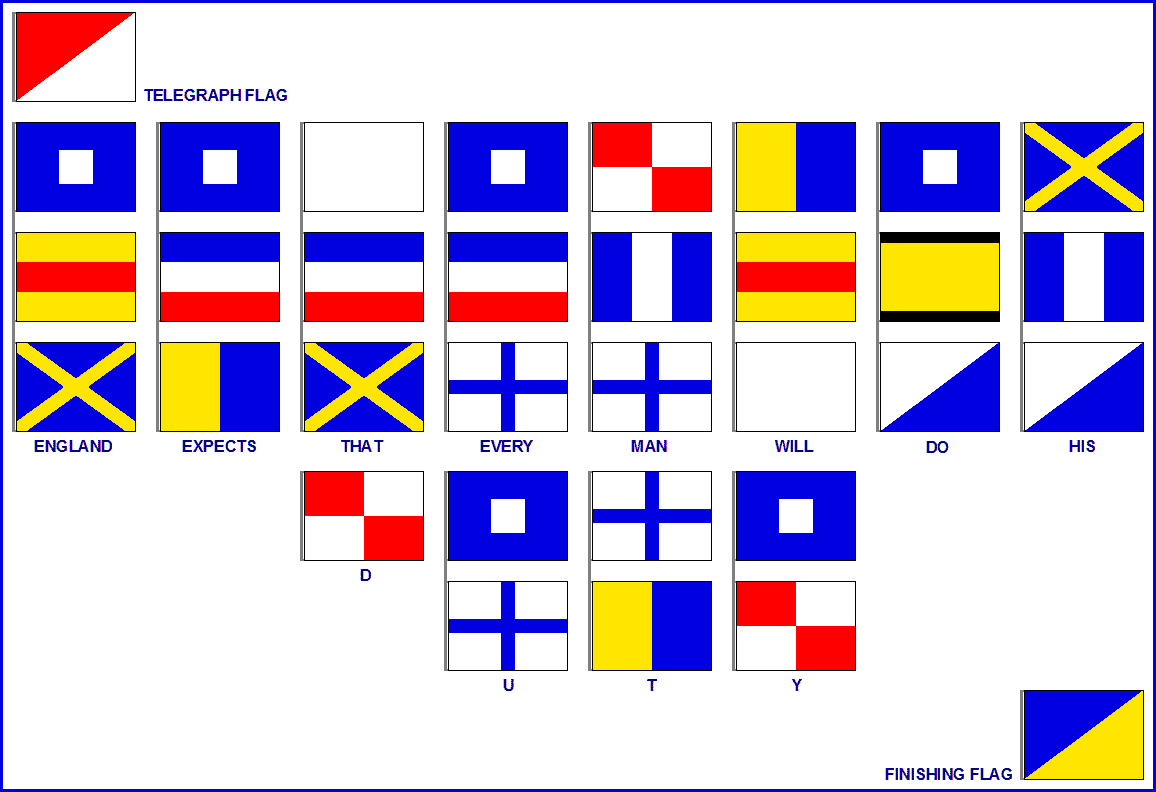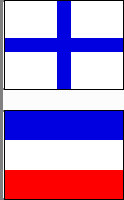|
|
|
ENGLAND EXPECTS |
|
|
|
NELSON'S TRAFALGAR SIGNALS • 21 October 1805 |
The signaling system in use by the Royal Navy at the time of the Battle of Trafalgar had been introduced in 1799 by Admiral Lord Howe and was further developed by Captain Sir Home Popham. Howe's original system was based on a set of flags numbered 0 to 9 that when hoisted in various combinations could transmit words, numbers, or messages listed in the Signal Book. Each letter of the alphabet was allotted a number, enabling words to be spelled out, The numeral flags could also be used to send numbers as such. But most signals were two-or three-flag combinations which referenced messages in the Signal Book, e.g. to discontinue the engagement, to pursue the enemy, to anchor, etc. The Signal Book was so arranged that the sender and receiver could quickly compose and interpret flag hoists. Howe's system was impractical for sending long messages due to the large number of flags required to spell out individual words. In 1800, therefore, Captain Popham developed a "vocabulary" system by which three- or four-flag hoists referenced words or phrases in the Signal Book. This was the system in use at the time of Trafalgar and Nelson's famous signal is a fine example of how it worked. This type of hoist was preceded by the so-called telegraph flag, indicating that a vocabulary message was to be sent. The signal was terminated by a finishing flag, functioning like the period at the end of a sentence. Receiving ships acknowledged the signal by hoisting the Affirmative flag, indicating that it had been seen and understood. If the signal was seen but not understood, receiving ships hoisted the Affirmative flag over numeral flag no. 8. For repeated numbers a substitute flag was provided. In Nelson's signal this flag, yellow with black stripes along the top and bottom, was employed in the hoist for the word do (No. 221), substituting for a second no. 2 flag. The second signal that Nelson ordered to be hoisted was No. 16 in the Signal Book: "Engage the enemy more closely." This remained aloft until it was shot away in the heat of battle. |

















